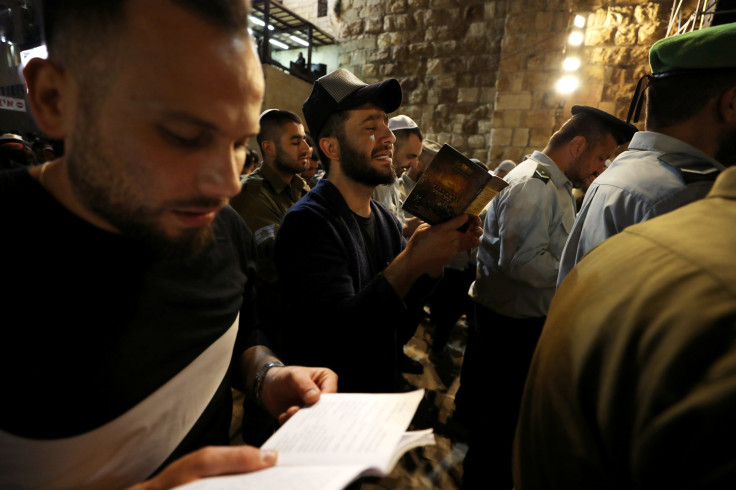When Is Yom Kippur? Facts About The Holiest Day In Jewish Calendar

Yom Kippur, known as a Day of Atonement in the Jewish religion, falls in the month of Tishrei (September or October in the Gregorian calendar). This year, the festival will begin at sundown on Sept. 18 and end at nightfall on Sept. 19.
In 2015, the United Nations recognized Yom Kippur as an official holiday. “Yom Kippur is the holiest day of the year for the Jewish people, and the U.N. should have recognized this holiday many years ago. Today we finally have an official place for the Jewish religion in the world’s Parliament,” Israeli Ambassador to the UN Danny Danon had said.
Here are some important facts about the holiest day of the Jewish year:
1. The Hebrew month begins with Rosh Hashanah (New Year) and ends with Yom Kippur. On this day, Jews atone for their sins from the past year and ask for forgiveness from God and other people.
2. The day before Yom Kippur, some Jews symbolically throw their sins away in a practice, called Tashlich, where they go near a waterbody, say prayers and throw bread into the water as a symbol of casting their sins away, Christians United For Israel reported.
3. The first prayer of the day, known as Kol Nidre, is often thought of as the quintessential prayer of the day. The prayer is simply a declaration that all the vows to be considered null and void, Chabad reported.
4. The day is observed with fasting as people forsake food and drinks for a 25-hour period. Isaiah 58, the haftarah portion read on Yom Kippur, addresses fasting as “No, this is the fast I desire: To unlock fetters of wickedness and untie the cords of the yoke to let the oppressed go free; to break off every yoke.”
5. Some Jews also wear white on the day as a symbol of purity while others restrain from wearing make-up or perfume and bathing. Some also abstain from wearing leather shoes or gold jewelry and do not engage in spousal intimacy.
6. Jews around the world spend the majority of the day in synagogues. Many synagogues hold special services and "Torah" readings throughout the day. The day typically ends with a single blast of the shofar, an ancient musical horn used for Jewish religious purposes.
7. Some Jews wave a chicken over their head three times while reciting prayers. They then slaughter the chicken, donating the meat or its monetary worth to the poor.
8. People decorate tables with festive clothes and light candles before the onset of the day. Jews then recite the candle-lighting blessings and thank god for enabling them to reach the holy day.
9. During biblical times, Yom Kippur was the only day when a high priest was allowed to enter the inner sanctum of the Holy Temple of Jerusalem, known as the Holy of Holies.
10. The 10 days before Yom Kippur are observed as the Days of Repentance, a period of time meant for introspection.
© Copyright IBTimes 2024. All rights reserved.





















